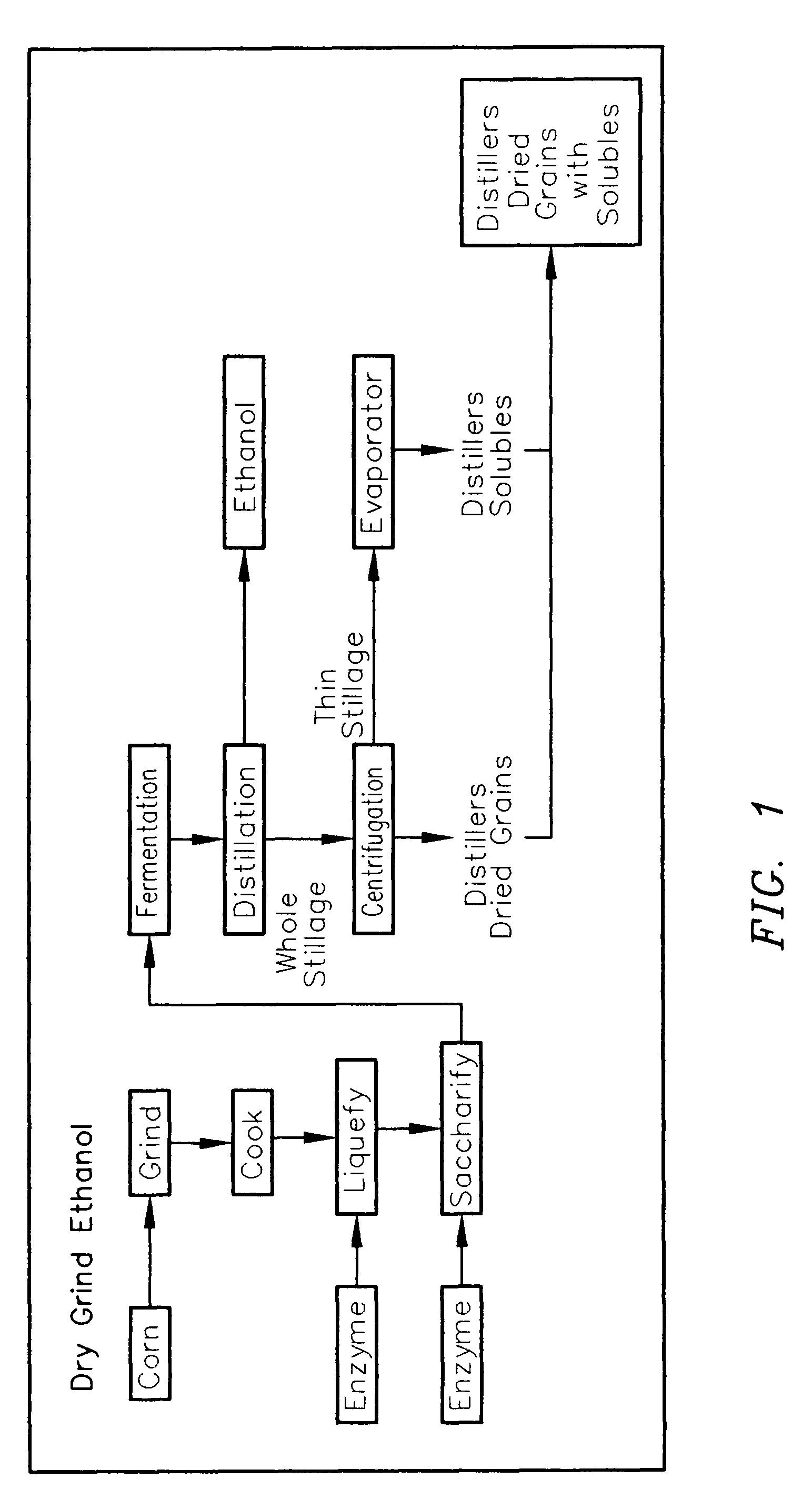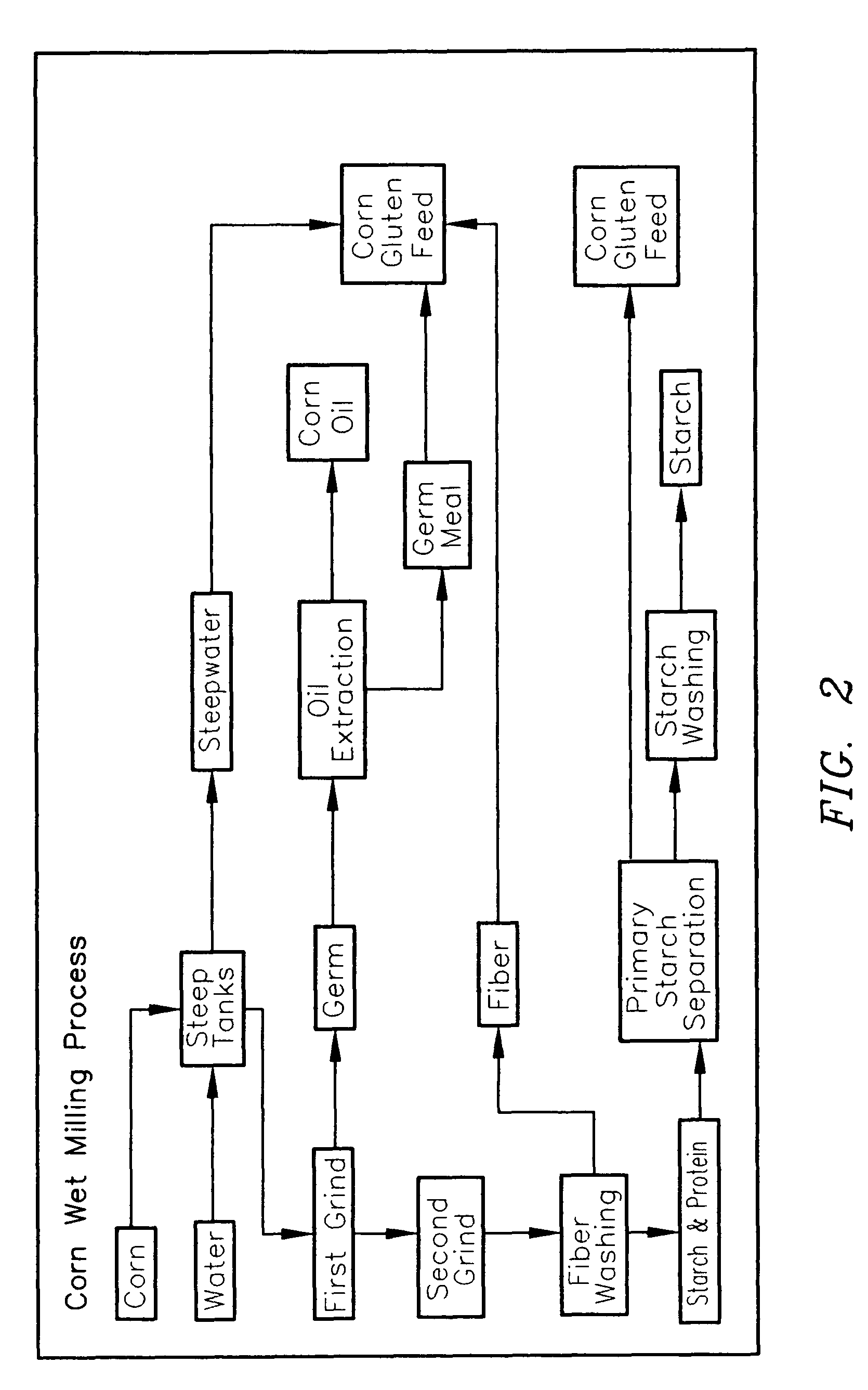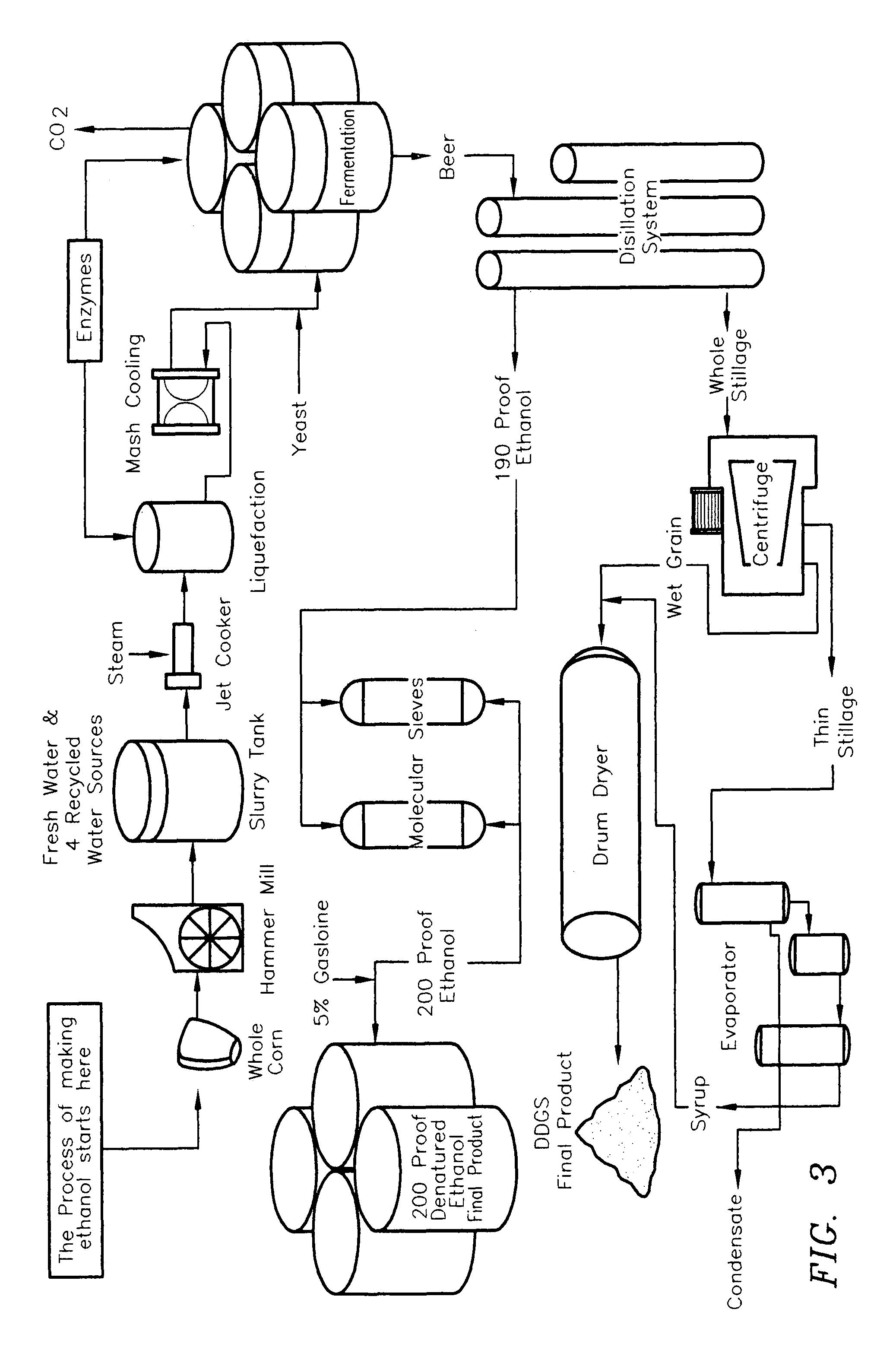System and method for isolation of gluten as a co-product of ethanol production
a technology of ethanol production and co-products, applied in the field of ethanol production, can solve the problems of time-consuming and costly, and the current system and method of isolating co-products may not efficiently utilize the various co-products
- Summary
- Abstract
- Description
- Claims
- Application Information
AI Technical Summary
Benefits of technology
Problems solved by technology
Method used
Image
Examples
Embodiment Construction
[0013]Reference will now be made in detail to the presently preferred embodiments of the invention, examples of which are illustrated in the accompanying drawings.
[0014]Referring generally to FIGS. 1 and 3, exemplary systems for dry milling of grain, such as corn, are shown. Typical dry milling systems, as shown, may produce ethanol via the following steps: corn is ground into coarse flour; the coarse flour is combined with water and / or enzymes are added to convert starch to sugar (thus forming the “mash”); the mash is cooked and sterilized; the mash is cooled; yeast and malt enzymes are added to the mash to allow the sugar to convert to ethanol and carbon dioxide (via fermentation); the mash is sent to distillation where ethanol is extracted leaving “spent mash” or whole stillage; the whole stillage goes to either screen / press or centrifuge (ex-decanting centrifuge) to separate out as much liquid as possible (the liquid being distillers solubles or “thin stillage”); the thin stilla...
PUM
| Property | Measurement | Unit |
|---|---|---|
| pressure | aaaaa | aaaaa |
| temperature | aaaaa | aaaaa |
| size | aaaaa | aaaaa |
Abstract
Description
Claims
Application Information
 Login to View More
Login to View More - R&D
- Intellectual Property
- Life Sciences
- Materials
- Tech Scout
- Unparalleled Data Quality
- Higher Quality Content
- 60% Fewer Hallucinations
Browse by: Latest US Patents, China's latest patents, Technical Efficacy Thesaurus, Application Domain, Technology Topic, Popular Technical Reports.
© 2025 PatSnap. All rights reserved.Legal|Privacy policy|Modern Slavery Act Transparency Statement|Sitemap|About US| Contact US: help@patsnap.com



